What makes a quality workholding fixture?
Collars. Holes. Mounting capabilities. Ultra-tight tolerances.
Some component features just aren’t possible to achieve by simply pouring metal.
In fact, a lot of castings need additional machining to ensure the parts function as they should. And if you have a part that needs additional machining, you need a workholding fixture to keep that part in place.
Designing a workholding fixture that ensures consistently machined features requires understanding of every step of the production process. You’ll need to consider casting design, machine specs and a whole lot more to design the perfect workholding fixture.
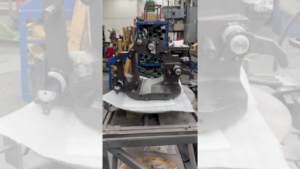
Conditions that may impact fixture complexity
As with all foundry tooling, complexity is a key consideration for workholding fixtures. Often, the type of fixture — manual, hydraulic, pneumatic, or a combination — contributes to its complexity. A combination of your budget, the size of your casting, and your facility’s capabilities dictate which type of fixture will be best for you.
But there are other factors that can contribute to the fixture’s complexity. Here are a few questions to consider.
- What is your expected production volume? Do you need to machine 100 parts in a year, or 100,000? For higher volumes, you’ll have to take additional steps during the design phase to ensure the fixture holds up over time and allows for quick and easy removal of finished pieces.
- What industry are you working in? While we can design and manufacture workholding fixtures for any application, some industries have different regulatory requirements. For example, aerospace projects demand much tighter tolerances and higher quality materials than most other projects.
- What step of the process do you need the fixture for? Fixtures are most commonly used to hold a part while final features are machined, but we’ve also designed fixtures to hold components during leak checks, deburring, and washing. The fixture’s use will determine details about material selection and design.
Smart engineering eliminates small issues before they become big problems
From chattering components to the size of the clamping machine, here are a few common challenges we run into when designing robust workholding fixtures, as well as how to overcome them.
Preventing human error while using manual clamps
Manual workholding fixtures rely on the operator to manually clamp the component in place. This introduces human error into the equation — after all, three different operators may employ three slightly different clamping strategies.
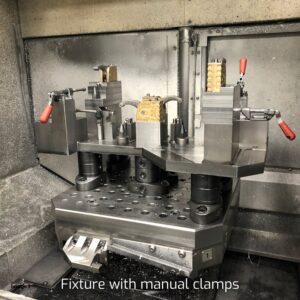
If the casting isn’t properly secured, it could chatter or vibrate, resulting in inconsistences like surface defects or less accurately machined features. In extreme circumstances, the casting could even free itself from the fixture, which increases the possibility of injuring employees or damaging other equipment.
To combat this, it’s critical to provide clear, repeatable instructions and foolproof the design as much as possible. Part placement sensors help, and there are more rudimentary methods, like designing fixtures so that they only fit together one way.
This ensures operators follow the same steps in the same sequence every time.
Accommodating internal plumbing with hydraulic and pneumatic clamps
Some workholding fixtures require plumbing to make hydraulically and pneumatically powered clamps function. But design for these fixtures is shifting — more facilities want this plumbing installed inside the fixture, instead of outside.
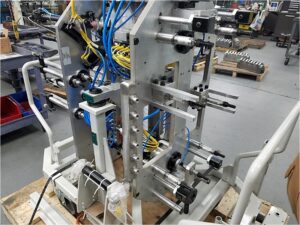
Chip evacuation is part of the reason behind this change. When plumbing outside the fixture tangles with chips and other debris, there’s a high risk of damage to both the lines and the fixture’s locators. But with fewer fixture components to get in the way of evacuated chips, the fixture is easier to clean between castings.
Move the plumbing inside the block of the fixture, and you create new challenges. Both in the design stage and when manufacturing the fixture, you must account for drilling the circuits and intersecting lines. You’ll want your longer drills to go in first to prevent that drill from breaking when you reach an intersecting hole.
Designing around machine specs
The machine itself presents a variety of challenges when designing workholding fixtures.
Each customer’s clamping system varies depending on which vendor they work with. Sometimes, that means our team works on our preferred equipment, Vektek, but sometimes that means we have to learn entirely new equipment specs to ensure the fixture fits properly.
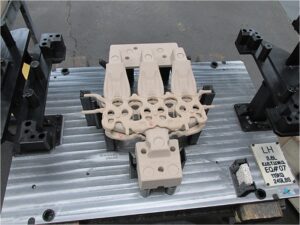
The size of the machine presents another challenge. Customers always want to push the envelope and put larger and larger castings into the machines they have. Not only can this make tool lengths an issue, but when a casting becomes too large or heavy to fit in the machine, the fixture won’t hold it as well (if at all).
Eliminating multiple operations
When castings need multiple machining operations done, that could mean you need multiple fixtures, or even multiple machines if the casting locators and holders interfere with the fixture. Not only is this inefficient, but it’s expensive.
Even for single machining operations done on a 5-axis machine, the fixture must not prevent the machine from reaching all sides of the casting. This is often accomplished through smart design, or maybe even minor changes to the casting itself.
Because Anderson Global also designs the molds and other foundry tooling that produces these castings, we can eliminate multiple operations in the design phase of tricky projects.
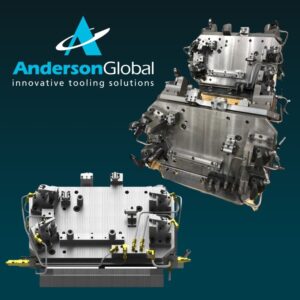
Partner with the workholding fixture experts
From design and simulation to casting adjustments and workholding fixtures, our Michigan facility can handle your whole project. No matter the challenge or complexity.
Get in touch with our team today to get started on your new workholding fixture. We’ll need to know your quality specs, the machine interface and any other expectations you have.
